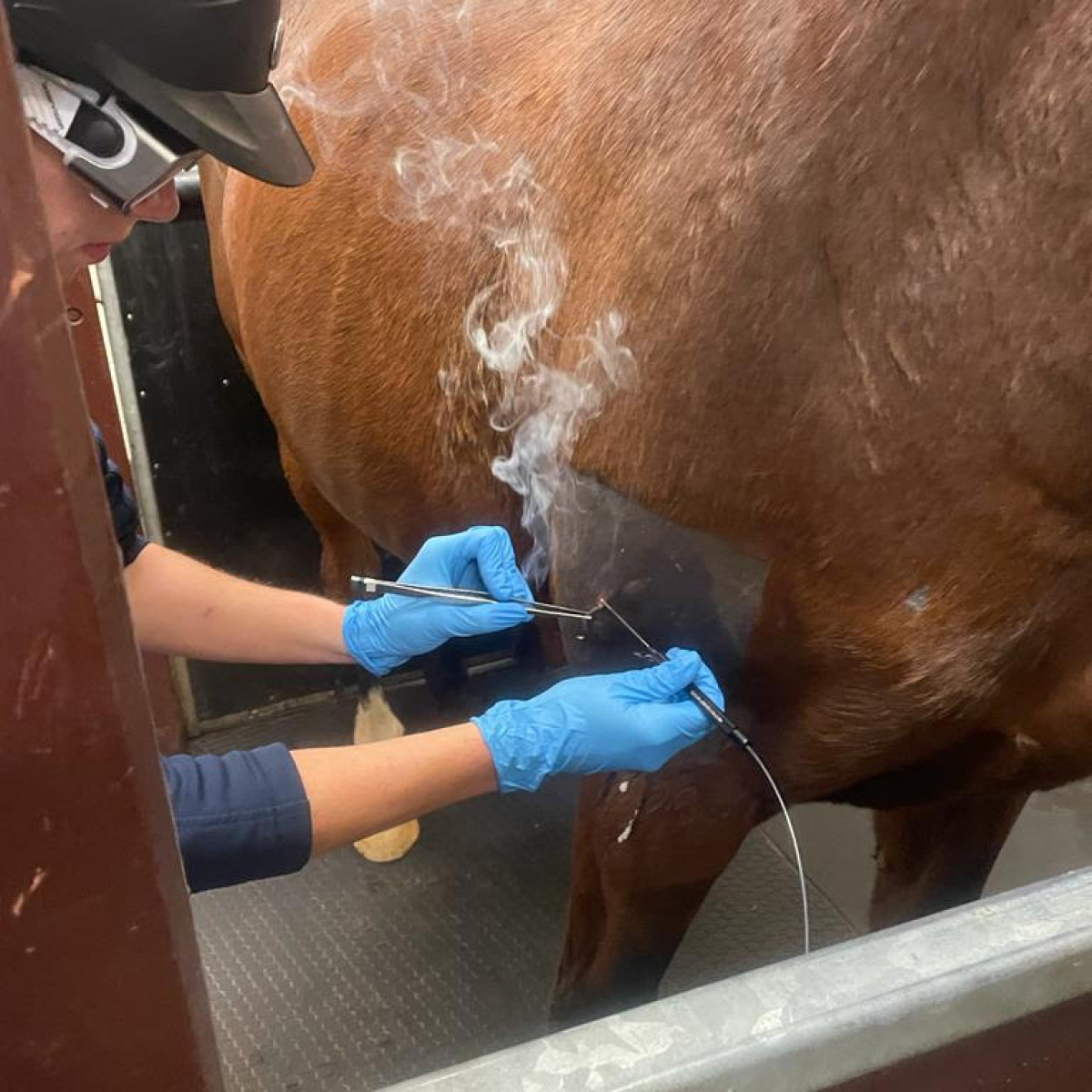Everything You Required to Find Out About Equine Therapy for Mental Wellness
Everything You Required to Find Out About Equine Therapy for Mental Wellness
Blog Article
Reviewing the Efficiency of Laser Therapy in Horse Therapy for Injury Rehabilitation
The examination of laser treatment's effectiveness in equine injury rehabilitation hinges on several factors, including healing time, pain reduction, and cells regeneration. Vets often observe superior end results with laser therapy compared to standard techniques, placing it as a critical element in equine care.
Recognizing Laser Therapy
Laser therapy has actually come to be a crucial device in veterinary medicine, especially in the treatment of equine conditions. Recognized for its non-invasive nature and efficacy, laser therapy includes the application of certain wavelengths of light to boost cells fixing and decrease swelling. This healing modality is significantly favored for its capacity to increase the recovery process in equines experiencing from a variety of bone and joint injuries and chronic problems.
The primary mechanism behind laser therapy is its ability to enhance mobile features. When laser light permeates the skin, it is taken in by mitochondria, the powerhouse of cells, which brings about increased production of adenosine triphosphate (ATP) This biochemical power increase assists in cellular repair work and regeneration. In addition, laser therapy advertises vasodilation, boosting blood flow and oxygen delivery to damaged cells, therefore quickening healing.
In equine medication, laser therapy is particularly advantageous for problems such as tendonitis, osteo arthritis, and wound healing. The method is admired for its pain-relieving residential or commercial properties, allowing equines to restore movement and function much more quickly. Veterinarians likewise appreciate its marginal side effects compared to various other treatment techniques, making it a dependable and safe option for equine treatment.

Exactly How Laser Treatment Works

Upon absorption, these photons trigger a collection of biochemical adjustments, enhancing mitochondrial function and causing increased adenosine triphosphate (ATP) manufacturing. This rise in ATP speeds up mobile metabolic rate, advertising cells fixing and regeneration. Furthermore, laser treatment regulates inflammatory feedbacks by affecting cytokine degrees and reducing oxidative anxiety, thereby relieving pain and swelling.
An additional substantial aspect of laser treatment is its duty in enhancing microcirculation. The therapy promotes vasodilation, boosting blood circulation and oxygen delivery to damaged tissues (Equine Therapy). This assists in the elimination of cellular debris and sustains the expansion of fibroblasts and collagen synthesis, go to this web-site important for injury healing
Medical Evidence
The effectiveness of laser treatment in equine therapy has been confirmed through various clinical research studies, showcasing its therapeutic prospective throughout a range of problems. A research carried out by Turner et al. (2012) showed that steeds treated with low-level laser therapy (LLLT) for tendon injuries displayed increased healing compared to those receiving traditional treatments.
In a similar way, study by Johnson and coworkers (2015) focused on equine muscular tissue injuries, revealing that laser treatment significantly sped up muscle fiber regeneration and reduced muscle rigidity. Scientific assessments have revealed that laser therapy can minimize chronic problems such as osteoarthritis.
Vet Insights

Vets likewise value the convenience of laser therapy. She directs out that laser treatment can be customized to the specific demands of each horse, guaranteeing optimal end results.
Moreover, veterinarians value the ability to incorporate laser therapy with other treatment techniques. This multimodal strategy can boost general treatment effectiveness, providing a comprehensive service for equine rehabilitation. Such recommendations from seasoned professionals underscore the expanding acceptance and application of laser therapy in equine medication.
Practical Considerations
A key facet of carrying out laser therapy in equine therapy entails comprehending the practical factors to consider that ensure its efficacy and safety. Firstly, it is critical to pick the suitable laser device, as webpage various kinds vary in wavelength, power, and penetration depth. Equine Therapy. Vets must be skilled in these criteria to customize therapy procedures efficiently to each injury kind
In addition, the frequency and period of laser therapy sessions need mindful preparation to make the most of therapeutic advantages while decreasing any kind of possible damaging impacts. Regular monitoring of the equine's feedback to therapy advice can direct necessary changes in the therapy routine. Developing a safe and controlled setting throughout therapies is likewise important to stop unexpected exposure to laser emissions, which might damage both the equine and the handler.
Educating and certification of workers providing laser therapy are critical to make sure proper technique and to maintain security standards. Additionally, preserving precise records of each session, consisting of laser setups and observed results, is vital for evaluating the overall effectiveness of the treatment and for making data-driven decisions.
Conclusion
Laser treatment has arised as an efficient method in equine injury rehab, offering considerable advantages in healing time, pain alleviation, and tissue recovery. For optimal results, constant surveillance and individualized treatment protocols remain important in leveraging the full potential of laser therapy in equine treatment.
Report this page